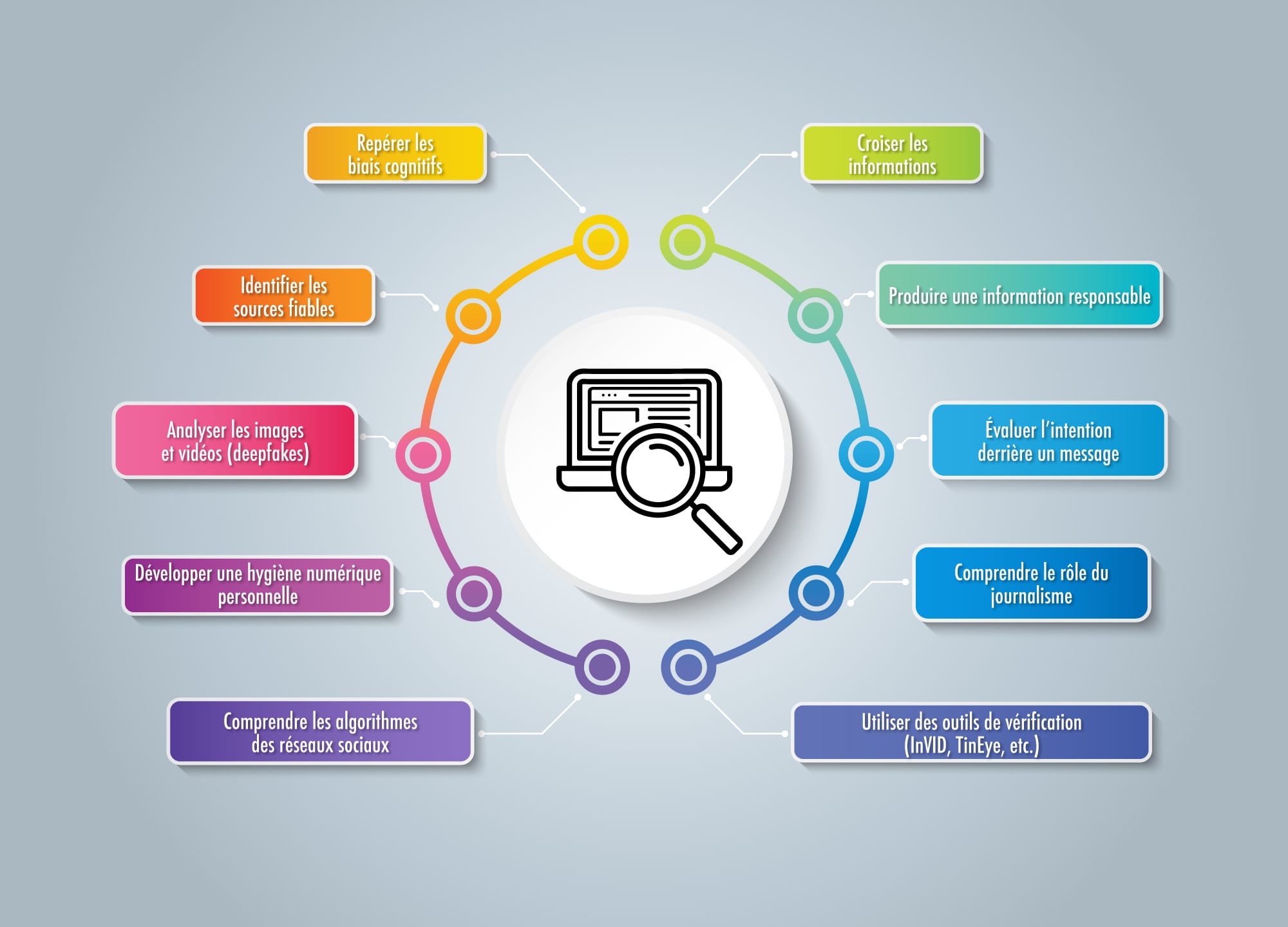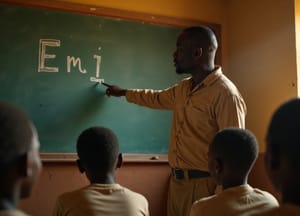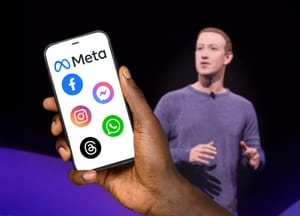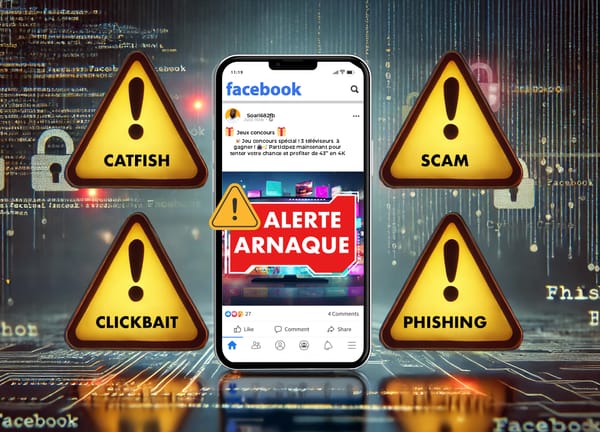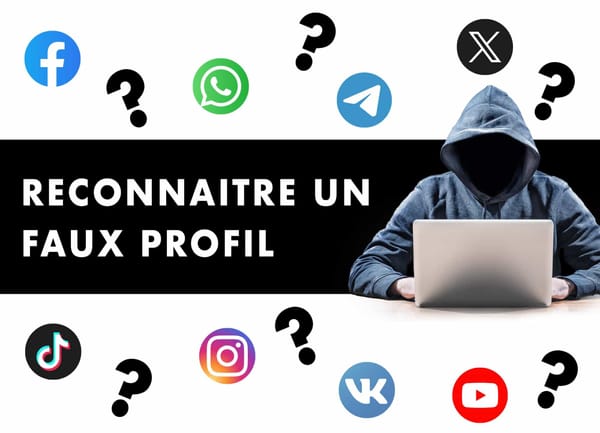Never in history has humanity had such large, fast and continuous access to information. Internet, social networks, search engines and video platforms have changed our relationships with news, knowledge, truth. A simple research can expose us to a thousand points of view, a thousand sources, a thousand stories ... among which there are also traps: rumors, false news, conspiracy theories, deepfakes, etc.
Faced with this overabundance, you have to learn to navigate, sort, understand and check. Young people must be trained in informational autonomy. Because to learn today is no longer just to receive information is also to choose, interact, share. Each user becomes an actor of a complex information ecosystem, sometimes toxic, often confusing.
Media and information education: training critical minds in the digital age
Training in media and information education (EMI) is not to impose a truth. It is transmitting critical tools, analysis reflexes, responsible digital gestures.
This educational guide offers 10 essential skills to arm the spirits in the face of disinformation. Each competence gives rise to a concrete action sheet, with clear objectives, examples of situations and ready-to-use activities.
These 10 skills aim to meet three major issues:
- Know how to analyze information or media
- Know how to check and cross -check the facts
- Know how to publish and share responsible
By cultivating these skills, students learn to no longer undergo information ... but to understand it, question it and use it wisely.
Competence 1: Identify reliable sources
Why is it essential?
On the Internet, everyone can publish information, but not all sources are created equal. Learning to distinguish a credible source from a dubious source is a fundamental reflex so as not to be manipulated or misleaded.
Educational objectives:
- Know how to recognize a source (author, media, institution, etc.)
- Understand what makes a source credible or not
- Develop a critical look at the origin of information
Scenario
A student of a sensationalist article shared on a social network claiming that a global event has been "hidden by traditional media". The article comes from a site with the ambiguous name, without legal notices or identifiable author.
→ Who is at the origin of this information? Can we trust him? For what ?
Educational activities offered
- Source identity sheet: Ask students to fill in a file to assess a source (who speaks? For whom? Why? How?).
- Role play: Simulation of a debate between a credible source (recognized journalist) and a dubious source (sensationalist anonymous blog).
- “Sure” challenge: in groups, the students compare two articles on the same subject, from different sources, and justify which is the most reliable.
Useful tools and resources
- Fact Checkers networks: Mali Check , Benbere , Fasochek , Anti Fake News cell
- How to check the reliability of a website?
Competence 2: Identify cognitive biases linked to disinformation
Why is it essential?
Our brain uses mental shortcuts to process information, but these cognitive can distort our judgment . Becoming aware of this makes it possible to better understand why certain false information seem credible to us.
Educational objectives
- Identify the main cognitive biases ( confirmation bias , halo effect, etc.)
- Understand how they influence our perception of information
- Develop a self-questioning posture
Scenario
A student shares an article that strengthens their political opinions without verifying their veracity. The article confirms its beliefs but contains factual errors.
→ Guided question: do I believe this information because it is true ... or because I like it?
Educational activities offered
- Quiz of biases: present different scenarios where a bias is at work and guess which one.
- Autopsy of an info: analyze an article or a post with a grid to detect the biases present.
- Biased “Fact-Checker” game: a student plays a verifier with an assertive bias; The others must correct it.
Useful tools and resources
- Cognitive bias.com
- How cognitive biases deceive our brain (integration of video on page)
Competence 3: Understanding social networks algorithms
Why is it essential?
Social networks select the information we see according to our habits. Understanding these mechanisms helps regain control of what you consume.
Educational objectives
- Understand how a news feed works
- Identify filter bubbles and their effects
- Think about the impact of algorithms on opinion
Scenario
Students realize that they never see the same content as they follow the same pages. Their sons are very different.
→ Guided question: why do I see some info and no others? Who decides?
Educational activities offered
- Cartography of my thread: students describe what they see on their thread and try to identify the selection criteria.
- Simulation of an algorithm: in class, the students "play" an algorithm by sorting information according to given criteria (likes, time spent, etc.).
- Inter-account comparison: In pairs, students compare their YouTube or Tiktok recommendations.
Useful tools and resources
- Recommendation algorithms: why the filter bubbles are problematic
- Do algorithms influence our decisions?
Competence 4: Analyze images and videos
Why is it essential?
Images and videos can be handled or out of context. You have to learn to question them as texts.
Educational objectives
- Develop critical thinking in the face of visual content
- Identify signs of manipulation (assembly, diversion, AI)
- Use tools to check an image or video
Scenario
A video circulates showing a political figure saying shocking words. But video is a deepfake.
→ Guided question: can we believe what we see?
Educational activities offered
- True or fake? : Students compare several videos or images, some being authentic, others modified.
- “Creative diversion” workshop: create a false image with humorous aim to understand how it is done.
- Technical decryption: observation of Deepfakes with image stop to identify the anomalies.
Useful tools and resources
- What are the Deepfakes and how can I spot them?
- Tinye for reverse image research,
- Deepware for Deepfake detection
Competence 5: cross information
Why is it essential?
No source has the whole truth. Crossing points of view makes it possible to better understand and check the facts.
Educational objectives
- Learn to check an info by consulting several sources
- Identify points of convergence and divergence
- Build an investigation process
Scenario
A news item is reported differently by three media: an alarmist title, a neutral article, a platform of opinion.
→ Guided question: What is the information common to all articles? What differences and why?
Educational activities offered
- Comparison of media covers: students read several versions of the same info and debate it.
- Timeline of an event: reconstruct an event thread from several sources.
- Journalist's game: Students play the role of journalists and must confirm a fact using three sources.
Useful tools and resources:
- Fact-Checking sites ( Mali Check , Benbere , Fasochek , Anti Fake News cell )
- Fact-checking tools: how to check the authenticity of information?
Competence 6: Use verification tools
Why is it essential?
Faced with the abundance of dubious images and content, it is essential to know how to use tools to quickly check their authenticity.
Educational objectives
- Discover simple and free verification tools
- Learn to carry out an inverted image search or to analyze a video
- Develop autonomy in content verification
Scenario
An image showing a violent demonstration is shared by saying that it comes from a recent event. After verification, it dates from 10 years ago, in another country.
→ Guided question: how to know if this image is recent, true, and well located?
Educational activities offered
- “Digital detective” challenge: in small groups, students must check an image or video using tools.
- Inverted tutorial: Students make a tutorial to explain how to use a tool like Intvid or Tineye.
- Fake or not? : Series of visual content to check together.
Useful tools and resources
- When and by whom was an image published for the first time?
- INVID ( Chrome )
- Tineye , Google Lens
- Fotoforensics , youtube data v iewer
Competence 7: Evaluate the intention behind a message
Why is it essential?
Information is never neutral. Understanding the intention makes it possible to thwart manipulations, propaganda or emotional traps.
Educational objectives
- Learn to ask the question: why was this message published?
- Identify possible intentions (inform, manipulate, sell, shock ...)
- Distinguish opinion, fact, and rumor
Scenario
A very shared video arouses indignation. The title is touting, the emotional content, but the background is imprecise and oriented.
→ Guided question: what is the end of this publication? Does it work on me?
Educational activities offered
- Dissection of a viral post: collective analysis of a post or a popular meme by dissecting intention, tone, staging.
- Game of intentions: associate different messages with their probable intentions.
- “Title trapped” workshop: offer misleading titles to neutral articles to illustrate the impact.
Useful tools and resources
- MOOC: Thinking critically, click wisely! : Media and information education program
- Write a journalist
Competence 8: Understanding the role of journalism
Why is it essential?
Journalism plays a key role in democracy, but it is often attacked or confused with other forms of information.
Educational objectives
- Identify what distinguishes journalism from other content productions
- Understand the ethical principles (verification, independence, etc.)
- Strengthen confidence in constructed information
Scenario
A student says that "journalists all lie" after seeing a video criticizing a report. In class, we compare a journalistic article with an opinion vlog.
→ Guided question: What is a journalist more (or different) than a content creator?
Educational activities offered
- Meeting with a local journalist: exchange on his profession and his constraints.
- Workshop “Build your info”: students must produce an article from raw facts, following a journalistic method.
- Decryption of a report: analysis of staging, sources, treatment choices.
Useful tools and resources
Competence 9: Produce responsible information
Why is it essential?
Each user is also a potential information diffuser. It is important to learn to publish with conscience and responsibility.
Educational objectives
- Understand the consequences of the disinformation that we share
- Learn to quote your sources, contextualize, respect the facts
- Adopt an ethics of publication
Scenario
A student shares a rumor without checking. This leads to a wave of hostile and anxiety -provoking comments.
→ Guided question: Am I responsible for what I share? Even if I did not create it?
Educational activities offered
- Charter of the good broadcaster: collective drafting of principles to be observed before publishing.
- Workshop “Post or not?” : Analysis of situations where a publication can be harmful.
- Citizen journalism: creation of a useful info and verified by the students themselves.
Useful tools and resources
- Munich eontological charter
- Serious Games Press Card on Fake News
Competence 10: Develop personal digital hygiene
Why is it essential?
Being an informed digital citizen is also taking care of your daily informational environment.
Educational objectives
- Think about your consultation and sharing habits
- Learn to organize your sources, configure your tools
- Cultivate attention, verification and decline
Scenario
A student admits that he no longer knows what to believe on the internet, and feels lost in front of the avalanche of contradictory information.
→ Guided question: How can I keep my head on the web?
Educational activities offered
- My digital survival kit: each student builds a “kit” of tools and good practices.
- Diagnosis of my uses: Personal questionnaire on his online habits.
- Detox Info: Voluntary experience of reducing exposure to certain sources or networks for a week.
Useful tools and resources
Information education is not limited to learning to thwart fake news. It participates in training free, lucid and committed citizens, capable of understanding their digital environment, making it informed and contributing to it in a constructive manner.
By integrating these skills into teaching practices, teachers and educators offer young people much more than technical tools: they transmit a critical posture, an ethics of attention, and the taste for seeking truth in complexity.

